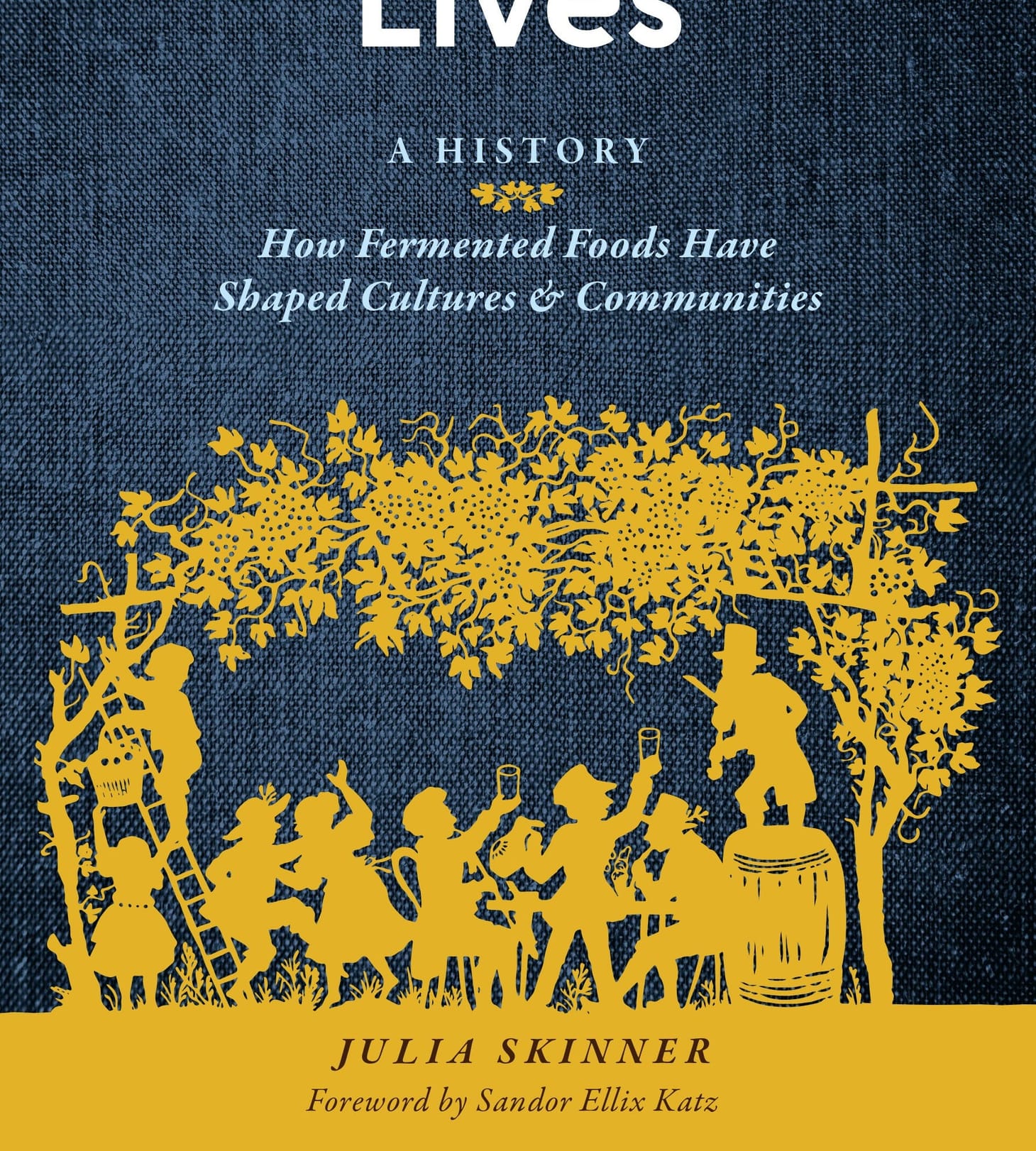Recipe: Cultured Butter
from Julia Skinner's 'Our Fermented Lives'

Table of Contents

Our Fermented Lives Cultured Butter118KB ∙ PDF fileDownloadDownload
Cultured butter is easy to make and delicious, and it’s a great way to sneak some extra live cultures plus a boost of savory and tangy flavor into your meals. Because it creates a selective microbial environment wherein beneficial microbes outnumber (and thus outcompete) harmful ones, culturing has been used historically to prolong butter’s shelf life. It also leaves you with two endlessly useful products: a fresh, delicious butter and some buttermilk full of active cultures that can work as a leavener and flavoring in baked goods.
MAKES ABOUT 1 POUND
1 quart heavy whipping cream (not ultra-pasteurized)
1 tablespoon plain yogurt (see note)
NOTE: When selecting a yogurt to use, look for an unflavored variety, preferably organic, with live and active cultures. If you like the way it tastes, you can use it to start your own yogurt, too, and never have to worry about buying yogurt again! There are many resources out there for learning to make yogurt, and you can find instructions online or in fermentation books such as Sandor Katz’s The Art of Fermentation or Gianaclis Caldwell’s Homemade Yogurt & Kefir.
- Combine the cream and yogurt in a nonreactive mixing bowl and whisk together. Cover with a clean cloth or towel, and allow to rest at room temperature overnight.
- Using an electric mixer, beat the cream until it forms butter, 5 to 10 minutes. Initially you’ll get a thick whipped cream and might think you’re done. Keep going! You’ll know you have butter when the buttermilk and butter separate.
- Pour off the buttermilk into a separate container and store in the fridge. Use within 2 to 3 days for the freshest flavor, though it will keep for up to 1 week.
- Gently massage the butter under cold water until the water runs clear to remove the excess buttermilk. This will prolong the life of your butter.
- Transfer the butter to a jar or other lidded vessel and store in the fridge. Like your buttermilk, cultured butter tastes best when used relatively soon after making, though it can keep in the fridge for 2 to 3 weeks.
BUTTER CULTURE VARIATIONS
You can make cultured butter using all kinds of ferments beyond yogurt. I was inspired to jump down this rabbit hole by chef and fermenter Sean Doherty of Cera restaurant in Maine, whose experiments culturing butter with blue cheese (which is so good) inspired me to start my own. Each ferment imparts its own unique qualities to butter, giving you another layer of flavor when you use that butter in dishes or as a spread.
The process is the same as above; just substitute another ferment for the yogurt. For most, I use between 2 and 4 tablespoons of ferment per quart of cream. This is a great space to play around and see what tastes best to you. In all cases, make sure you’re using live cultures.
My favorites include:
- crumbled blue cheese
- unpasteurized fire cider
- live-culture pickle brine
- unpasteurized banana or strawberry-jalapeño vinegar
- unpasteurized honey vinegar or mead


Excerpted from Our Fermented Lives © by Julia Skinner. Used with permission from Storey Publishing.
wordloaf Newsletter
Join the newsletter to receive the latest updates in your inbox.




